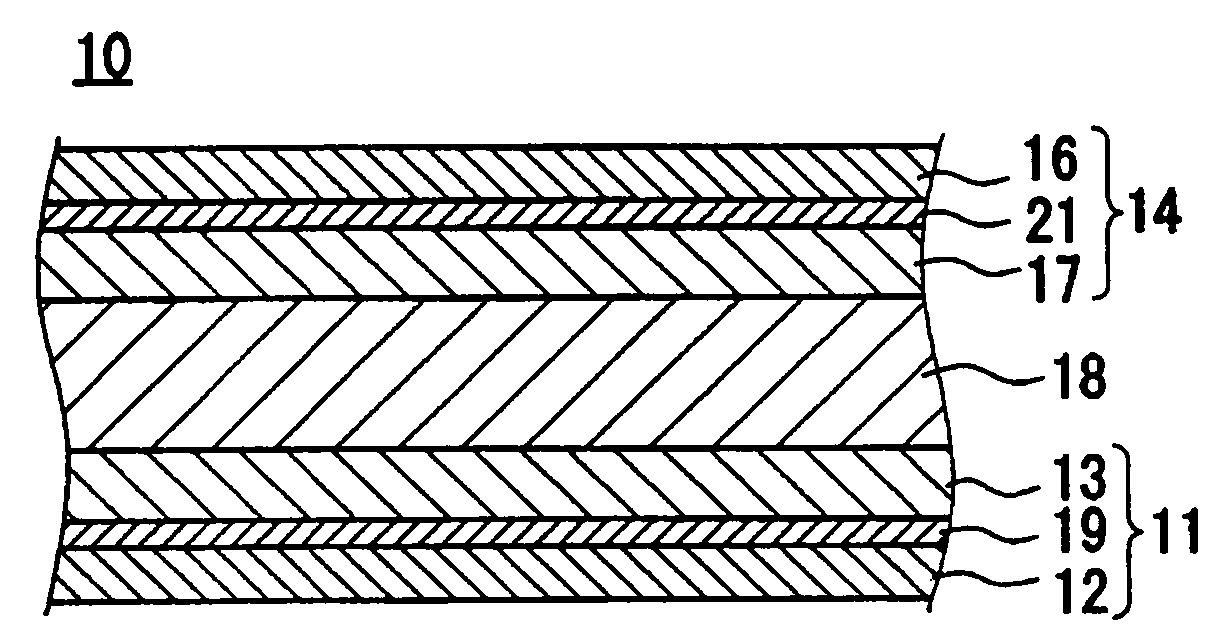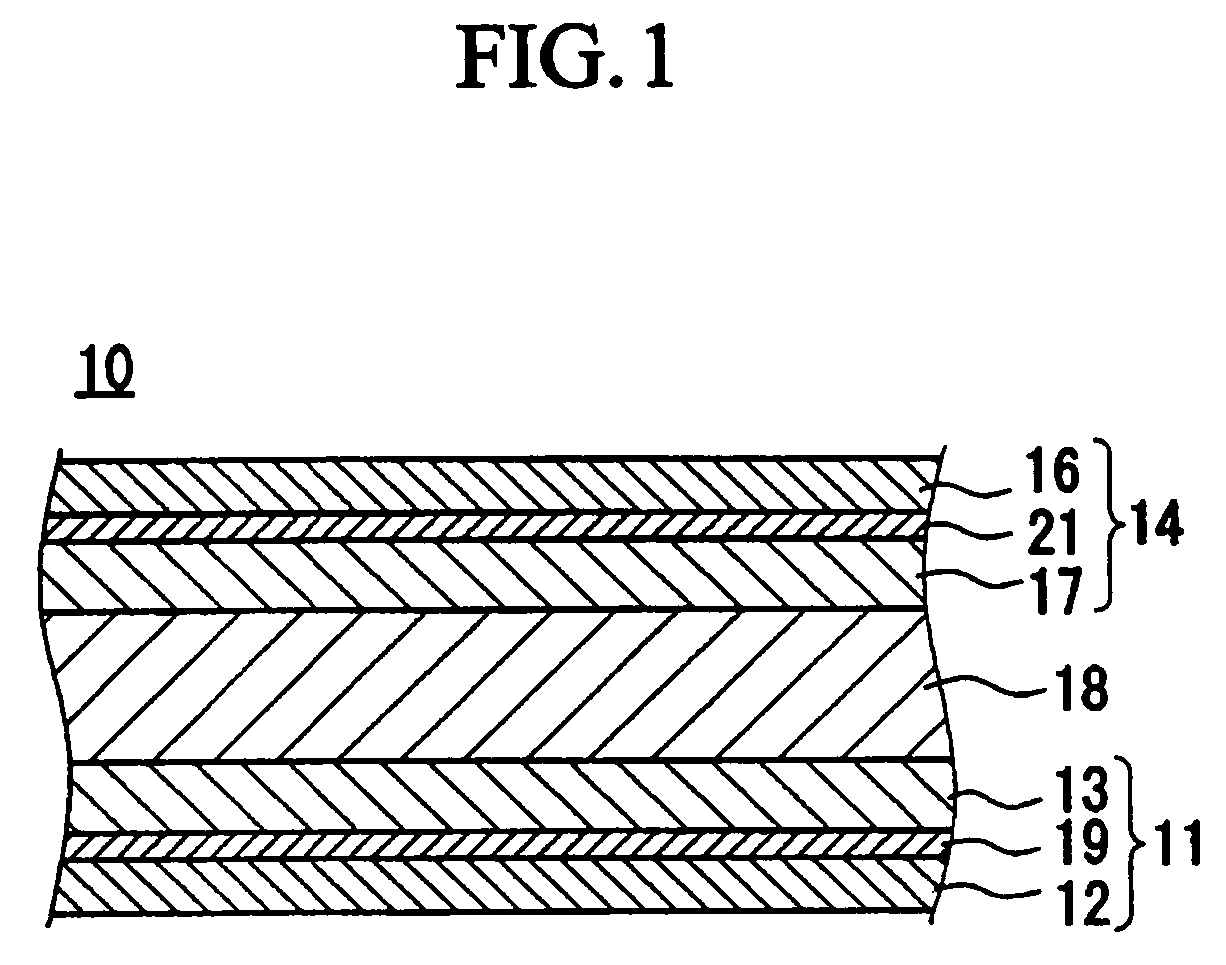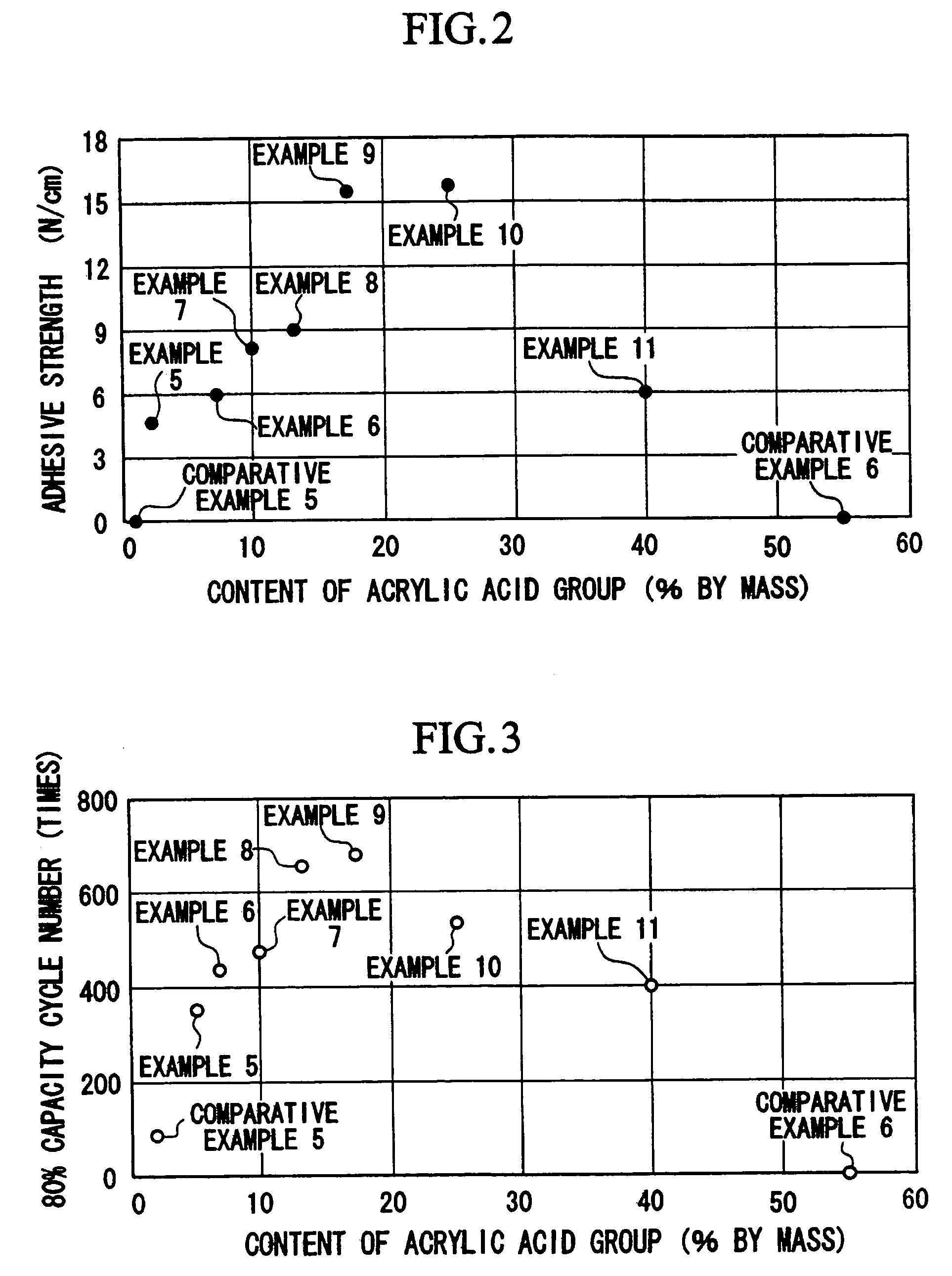Characteristics which the bonding layer is required to have include sufficient force of adhesion with the current collector material, sufficient force of bonding with the binder contained in the active material layer, stability in the presence of an
organic solvent in the electrolytic solution, excellent long-term storage stability,
thermal stability to remain without peeling when exposed to high temperature and electrochemical stability to endure repetitive charge-
discharge cycles, but there has not been a solution that meets these requirements.
However, simply increasing the surface areas of the positive electrode sheet and the negative electrode sheet has a drawback of making the electrodes difficult to
handle because of the large surface areas.
When the positive electrode sheet or the negative electrode sheet are folded or wound in a laminated state, the positive electrode sheet or the negative electrode sheet is bent along the folding line, thus causing the positive electrode sheet or the negative electrode sheet to peel off from the
electrolyte layer, such as polymer
electrolyte layer, which leads to a decrease in the
effective surface area of the interface between the electrode and the electrolyte, resulting in decreasing charge capacity and
internal resistance of the battery, thus deteriorating the cycle characteristics of the charge capacity.
Also, there has been a problem in that the current collector peels off the active material layer formed on the positive electrode sheet and the negative electrode sheet due to bending along the folding line.
Moreover, there has been a problem in that the positive and negative electrode active material
layers expand and contract as the positive and negative electrode active material
layers store and release lithium ions in the
charge and discharge cycles, resulting in a stress that causes the active material layer to peel off the current collector.
However, the technique (1) has a problem in that
butyl rubber,
phenol resin or the like used as the binder is corroded with the electrolytic solution and peels off.
In the technique (2), although
adhesive strength between the negative electrode current collector and the negative
electrode material layer can be increased by forming the bonding layer containing, as a major component, acrylic
copolymer containing a conductive substance mixed therein between the negative electrode current collector and the negative
electrode material layer because an acrylic
copolymer has high strength of bonding with PVdF contained in the negative
electrode material layer and the negative electrode current collector, there has been a problem in that the acrylic
copolymer is corroded by the electrolytic solution and the negative electrode current collector peels off the negative electrode material.
Although the technique (3) is claimed to increase the peel-off resistance and the number of 80% capacity cycles in the case in which
polyurethane resin is used as the undercoat layer, the effect is not practically sufficient.
When an
epoxy resin is used, the
epoxy resin is corroded by the electrolytic solution, and therefore there is a possibility that the active material layer will peel off the current collector.
In the technique (4), although satisfactory
adhesive strength between the bonding layer and the active material is achieved since the bonding layer includes a material similar to the binder contained in the
active layer, the strength of bonding with the current collector is not satisfactory, and it is comparable to that in a case in which the active material layer is formed directly on the current collector.
Also, because the electrolytic solution infiltrates the binder, there is a problem of weak
bonding strength between the bonding layer and the current collector.
In the technique (5), the active material layer can be formed directly on the current collector without using a bonding layer since the graft-polymerized material that has high strength of bonding with the current collector is used as the binder of the active material layer, but it has a drawback in that solvents that can be used are limited since the polymer is difficult to dissolve.
Also, because it is difficult to completely remove the
solvent from the inside of the battery, there is a possibility that the
solvent remaining in the battery will cause an
adverse effect on the battery performance.
However, the powdered carbon does not provide sufficient electrical
conductivity, and it is necessary to increase the weight ratio of the powdered carbon to the binder, (powdered carbon / binder), in order to obtain satisfactory electrical
conductivity.
When the proportion of the powdered carbon in the bonding layer is increased, the proportion of the binder in the bonding layer decreases and the contact area of the binder with the current collector and the active material layer decreases due to the large volume of the powdered carbon, thus resulting in insufficient
adhesive strength.
However, among the third prior art techniques described above, the
battery electrode of the prior art described in Japanese Unexamined Patent Publication No. 11-73947 requires it to form the bonding layer in a pattern of dots, stripes, or a grid, and there is a problem in that it is very difficult to form the bonding layer.
Also, there remains a problem in that, in the case in which the area of portions which are not coated, where electrons are exchanged between the current collector and the active material layer, is relatively large, sufficient adhesion cannot be maintained in the portions and peel-off occurs.
As a result, sufficient adhesive strength cannot be achieved between the current collector and the active material layer, thus the problem of decreasing charge /
discharge cycle characteristics of the battery remains to be solved.
This problem is supposed to be due to the presence of a large quantity of powdered material, such as carbon, that is added to the
coating slurry, in the interface between the current collector and the active material layer.
 Login to View More
Login to View More  Login to View More
Login to View More 


